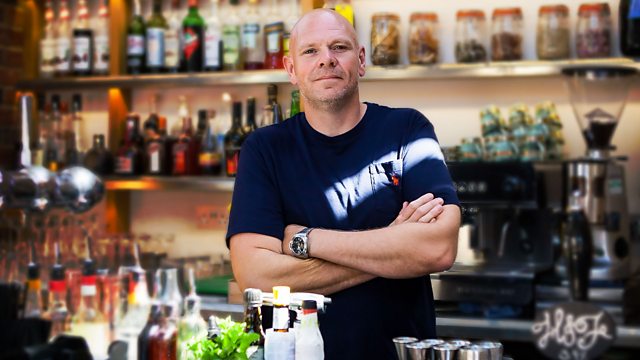Thanks to all of you who sent in your cookery questions. Here are my answers to some of them. Check to see if yours is included. I’m sorry I couldn’t answer them all, but keep them coming in.
Simon English from Cheltenham asked:
Hi Tom We are sat in the butchers tap and grill. Can you tell me where the Meat comes from, interested in the providence of the meat.
The prime meat for all our restaurants mostly comes through HG Walter.
The beef is primarily Aberdeen Angus or Hereford from Ayreshire, Scotland or Wexford County, Ireland.
The Lamb is Suffolk Texel cross from Launceston in Cornwall.
Our Pork is free range Blythburgh from Suffolk.
Anna Barnett from North Dalton asked:
How do you successfully peel a hard-boiled egg. I have tried numerous ways, but I always end up removing half of the egg white!!
There are 2 points here:
Firstly, if the egg is very fresh it can cause the egg white to stick to the shell when boiled, this is due to the low PH level of fresh egg whites. Meaning the high acidity level causes the whites to adhere to the shell, a couple of days age on the eggs makes all the difference
Secondly is the cooking, plunge the eggs into boiling water rather than bringing to the boil, cook for desired time (depending on how you want them cooked) then plunge into ice water quickly to shock, remove them and then they should peel nicely
Liz Kershaw from Maidenhead asked:
I often make your pork, veg and lentil sausage rolls and despite squeezing the water out of the courgettes I still find a lot of liquid comes out during cooking and the bottom don’t crisp up. Any suggestions to prevent a soggy bottom?
Sprinkle a small amount of salt over the grated courgettes, mix, and leave to stand for 2 minutes, then squeeze out tight, this will remove most of the moisture.
However, the second step of cooking the courgettes with the carrots, garlic and fennel seeds is equally important as this is when the excess moisture is cooked away, if you feel there is still too much moisture after 5 minutes, just cook a little longer until the mix is drier
Sebastian Stear from London asked:
Whenever I make pasta I do what is recommended – pile the flour into a mound, make a well, and break the eggs into the well. However, I struggle to incorporate the flour into the eggs before one of the walls of my flour volcano gives way, and always end up desperately plugging the holes to keep the egg involved in the process. Is there any reason why I shouldn’t start the dough in a large enough bowl?
There is absolutely no reason not to use a bowl.
It’s mostly made on the table as it lends itself to easily being kneaded once all ingredients are incorporated
Jane Why from Thornhill asked:
As someone just diagnosed with a wheat and gluten allergy, what is the best bread recipe to use?
This is a nice one to try:
INGREDIENTS
- 60g butter, melted, plus extra to grease the tin
- 175g ground almonds
- 30g ground flaxseed
- 20g coconut flour
- 5 large free-range eggs, lightly beaten
- 1½ tbsp sugar
- 1 tbsp white wine vinegar
- 1½ tsp salt
- 1½ tsp bicarbonate of soda
METHOD
- Preheat the oven to 180°C/Fan 160°C/Gas 4. Butter a 450g loaf tin, line it with baking parchment and butter the parchment.
- Put all of the ingredients into a food processor and blend for 1 minute until well combined.
- Tip the mixture into the prepared loaf tin and bake for 35 minutes until cooked through.
- Leave the loaf in the tin on a wire rack for 10 minutes, then remove and place directly on the rack to cool completely before slicing.
Please keep your questions coming in.




